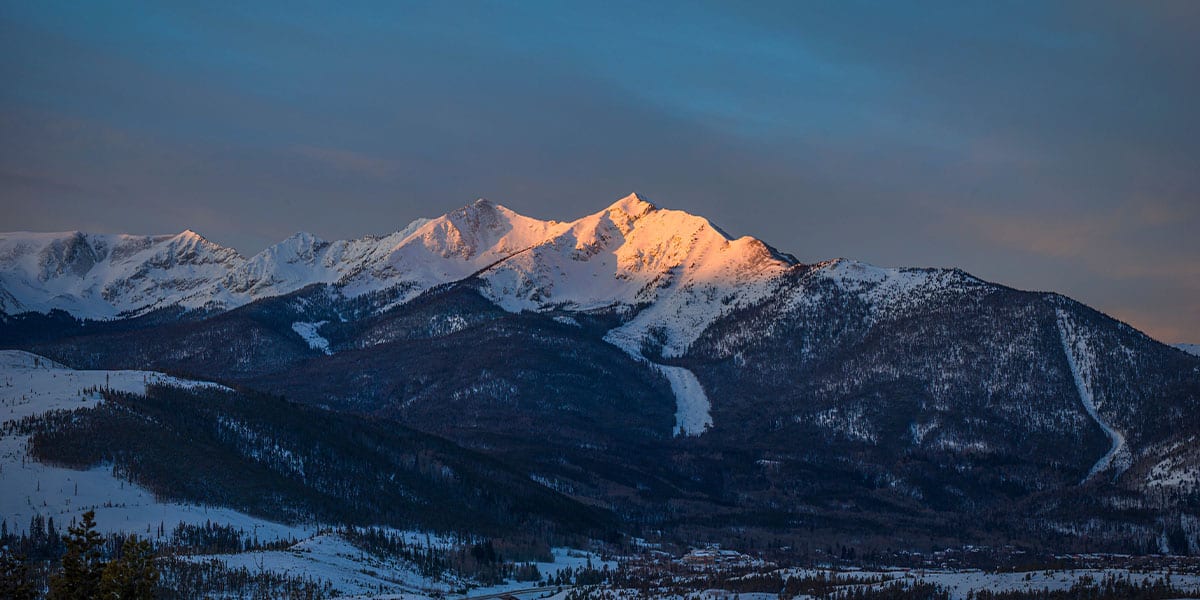The 2020 wildfire season was incredibly devastating to Colorado’s landscape, homes, infrastructure, and the economy. The East Troublesome and Cameron Peak Wildfires scorched over 400,000 acres and destroyed 1,041 structures, including nearly 600 residences. While Summit County was spared last year, and countywide mitigation efforts are in place, our dry climate, paired with lower than average snowfall this past winter means that there is always a risk of large-scale wildfires, which dramatically alter the terrain and ground conditions and pose a threat to our safety and property. While Colorado is still recovering from these historic events, it’s important to understand this increased risk and prepare for the upcoming wildfire season. Below are some tips and resources to help Summit County residents be ready if there is a wildfire in our area.
Prepare for Emergencies
- Make a “To Go Kit” which includes food, water, first aid, and lighting, and have an emergency plan to include evacuation routes
- Conduct a home inventory and take pictures of your possessions
- Keep important papers in a waterproof place within your emergency kit
- Sign up for community emergency alerts through Summit County to include air quality, flash flooding, and weather
Protect Your Property
- Consider establishing a defensible space perimeter around your home of at least 30 feet but possibly up to 200 feet depending on the terrain
- Establish a well-irrigated area around your home, and remove dead trees and dense vegetation within 30 feet of the structure
- Remaining live trees should be 10 feet apart with tree limbs 10 feet or more from the structure
- A few other considerations are using fire-resistant materials for roofing, siding, and windows
- Prevent sparks from entering your home through vents by covering exterior attic and underfloor vents with wire mesh no larger than 1/8 of an inch
- Keep your gutters, eaves, and roof clear of leaves and other debris. Move firewood away from your home, fences, or decks
Flooding After Fire
Floods are the most common and costly natural hazard in the nation. Normally, vegetation absorbs rainfall, reducing runoff. However, wildfires leave the ground charred, barren and unable to absorb water, creating conditions ripe for flash flooding and mudflow, a condition that may exist for several years. Even areas that are not traditionally flood-prone are at risk, due to changes to the landscape caused by fire.
Most standard homeowner policies do not cover flood damage. Residents should protect their homes and property with flood insurance, before a weather event occurs. Flood risk remains significantly higher until vegetation is restored – up to 5 years after a wildfire. Flood insurance protects your investment and provides peace of mind. Remember: it typically takes 30 days for a new flood insurance policy to go into effect, so contact your insurance agent now. Some communities in the declared areas may not be able to purchase flood insurance through the National Flood Insurance Program (NFIP) but other sources of flood insurance may be available.
Further Resources
To speak with a Mitigation Specialist about how to purchase flood insurance or protecting your home, email your questions and contact information.
- In response to the wildfires that affected northern Colorado last year, the U.S. Small Business Administration (SBA) is offering low-interest disaster loans to non-farm businesses of all sizes, private nonprofits, homeowners and renters in the Colorado counties of Grand, Boulder, Clear Creek, Eagle, Gilpin, Jackson, Larimer, Routt and Summit.
- For additional assistance, SBA has established a Virtual Disaster Loan Outreach Center that is open Mondays through Fridays, 8:00am to 8:00pm EST. You can contact an SBA customer service representative via email or by phone at 800-659-2955. You can apply online here.
- If you require a reasonable accommodation or an alternative format of available information such as American Sign Language format, or audio format, please submit your request by email.
- If you need assistance to access a program or service funded by FEMA, please contact FEMA at (833) 285-7448 [ Press 1 for English, 2 for Spanish, 3 for the Language Line] or email.
- List of State of Colorado and FEMA resources to aid in the recovery of the 2020 wildfire season and preparation for the 2021 wildfire season:
- For more information on Colorado’s recovery from the 2020 Wildfires, visit FEMA.Gov or Colorado Mitigation and Recovery Site.
Upcoming Wildfire Preparedness Webinars
Join experts from wildfire, flood, agriculture and insurance organizations for a series of upcoming webinars discussing important recovery and rebuilding aspects as well as increased flood risk after wildfire. Panelists will answer frequently asked questions and provide informative resources you can use today.
- Flood After Fire Webinar Lunchtime Session: (12:00 – 1:00pm MST, Monday, April 12)
- Wildfire Preparation & Recovery Webinar Lunchtime Session: (12:00 – 1:00pm MST, Wednesday April 14)
- Flood After Fire Evening Session: (5:30 – 6:30pm MST, Tuesday, April 20)
- Wildfire Preparation & Recovery Evening Session: (5:30 – 6:30pm MST, Wednesday, April 21)
These presentations will be available in closed caption and ASL format. If you require an alternative format of available information, please submit your request via email.
Do you have a question about registering for these webinars? Email here.

